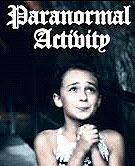"Can you feed a familiar audio signal through your volume control circuit to demonstrate response and quality of signal pass through?" - Christopher
Yes, I'll do something like that soon. Was playing today with high-pass filtering added to the volume control signal, which gives some attack envelope on fast hand moves. Just got it working a few minutes ago and need to experiment with it more (I love working for myself, I get to pick the 80 hours I wish to work each week).
"I do this in my sample which also demonstrates another feature I achieved by using my method of PWM. The outer volume field is more responsive/aggressive than the inner near the loop. This allows for a very gentle, yet wider, soft control window near the loop before off."
Yes, I need to experiment with non-linear responses more, though the linearized response with hard limits seems pretty OK to me.
"You get a freaky daily visitor count on your thread."
So I've noticed!
"I like to think it is several competitive manufactures waiting for a moment to buy out your research with a perfect offer you cannot refuse. That end packaging scares me for you."
For a Theremin? I don't think anyone outside of a few tens of people in the world could care all that much, there's no money in even the best Theremin. Though a fantastic performing digital Theremin could probably be manufactured for <$200 (but good luck getting it through emissions testing).
"Ran a little test with the little girl pic, this thread is huge being cataloged in the search engines (google). Most hits are landing on other pages, not the most recent. A visit is still a visit. Would be nice you get a dollar for every hit, they all see that nice theremin ad at the top of the page."
I'd take a penny for every hit! I'd be interested in your data if you want to post it here or send it to me via email. I've no clue what's causing the hits, but this thread has been going for what seems like forever and I just figured it was a mix of bots and people who check in now and then.



